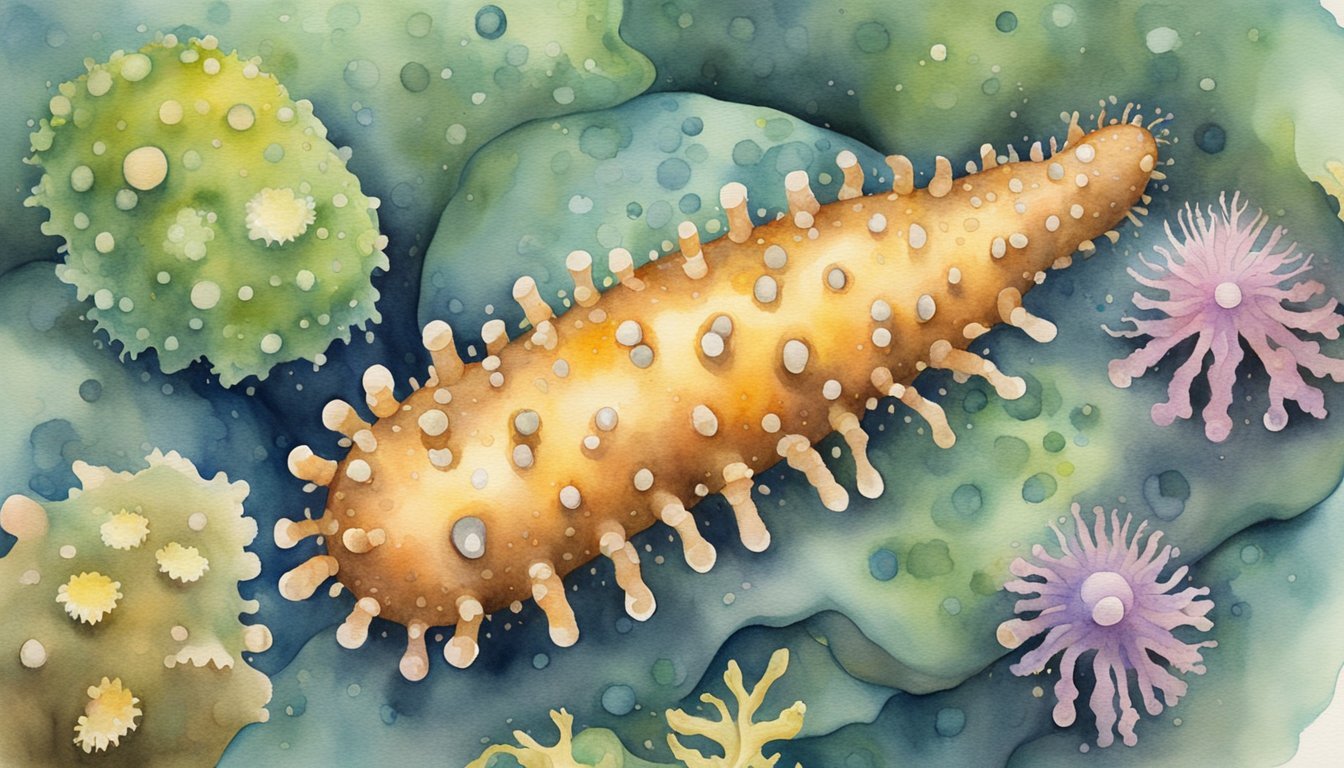Overview of Sea Cucumber Defense Mechanisms
Sea cucumbers, belonging to the group echinoderms, have developed sophisticated defense mechanisms to protect themselves from predators in the ocean. These creatures employ a combination of physical and chemical strategies to deter would-be attackers, ensuring their survival in diverse and often harsh marine environments.
Cuvierian Tubules: A Unique Defensive Feature
When under threat, some sea cucumber species can expel sticky, entangling threads known as Cuvierian tubules from their anus. These specialized structures can adhere to and immobilize predators, providing an effective means of escape. The black sea cucumber is one such species that utilizes this startling defense.
Chemical Defenses: Toxic Compounds and Saponins
In addition to physical defenses, sea cucumbers possess potent chemical defenses. These creatures produce toxic compounds, including saponins, which are deterrents against a wide range of aquatic threats. Saponins serve a critical role in the sea cucumber’s innate immunity system. They protect the animal from pathogens and act as a chemical defense against predators. Certain sea cucumbers have been noted for their ability to withstand the threats of toxic bacteria due to these substances.
Molecular and Genetics Aspects of Defense

The defense mechanisms of sea cucumbers are intricate, involving a complex interplay of chemicals and genetic factors. This section explores the molecular and genetic underpinnings that enable these creatures to deter predators and thrive in their marine environments.
Biosynthesis of Defensive Chemicals in Sea Cucumbers
Sea cucumbers are equipped with a unique defensive system that produces saponins, such as holothurin, directly aiding in their protection. This process begins at the molecular level, with the biosynthesis of these compounds being a key aspect. Saponins are glycosylated steroids, and the pathway leading to their creation starts with the enzyme oxidosqualene cyclase. This enzyme catalyzes the conversion of 2,3-oxidosqualene into various triterpene skeletons which are core components of saponins. The genes that encode the enzymes for saponin biosynthesis have been identified in species such as Apostichopus japonicus and Holothuria leucospilota, revealing the genetic blueprint underlying their defense strategy.
Genetic Insights into Sea Cucumber Defense Mechanisms
Investigations into the genome of the sea cucumber have underscored the genetic underpinnings of their defense mechanisms. For instance, the genome of Parastichopus parvimensis has shed light on the presence of OSC (oxidosqualene cyclase) genes, which play a critical role in sterol biosynthesis, and by extension, the formation of defensive chemicals. Additionally, scientific efforts such as those by Amisha Thimmappa in India and the team at Amity University Uttar Pradesh have expanded our understanding of these creatures’ defense mechanisms. Researchers use genome mining techniques to explore this aspect, which not only has ecological implications but could also lead to the discovery of natural products with potential health benefits for humans. This genetic exploration contributes to a better understanding of the ecological niche of sea cucumbers and their ability to produce high value chemicals with applications ranging from traditional medicines to vaccine adjuvants.

